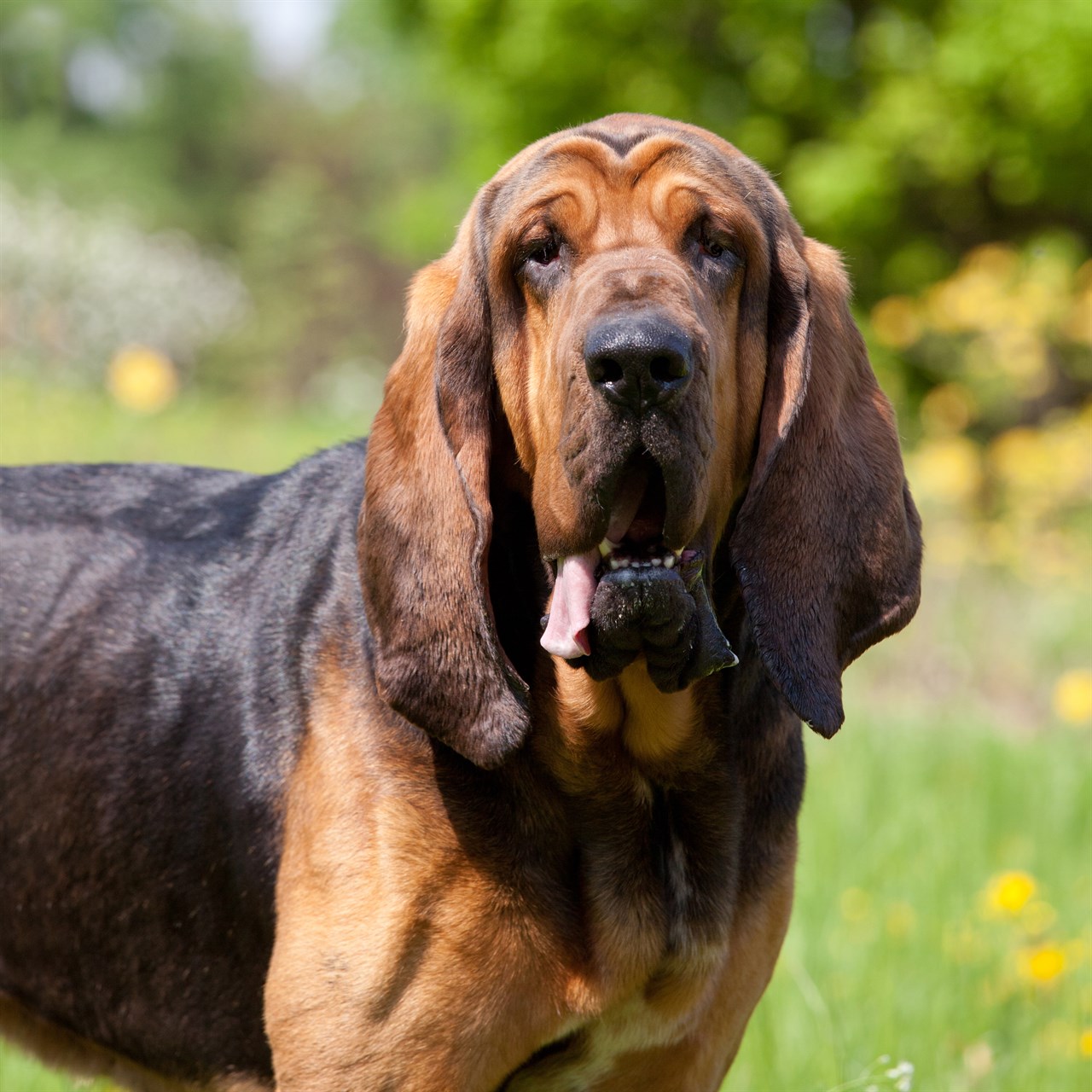The Bloodhound: A Nose for History and Adventure

In the world of dog breeds, few canines possess the distinctive characteristics and intriguing history of the Bloodhound. With their droopy jowls, floppy ears, and an unparalleled sense of smell, these dogs are a breed apart. In this comprehensive long-form piece, we'll delve into the captivating world of Bloodhounds, exploring their history, physical attributes, unique traits, and answering some common questions about this remarkable breed.
A Walk Through History
The history of the Bloodhound is a journey that spans centuries. Believed to have originated in medieval France, they were initially called "St. Hubert Hounds" after St. Hubert of Belgium, the patron saint of hunters. These dogs were selectively bred by monks at the St. Hubert Monastery to improve their scenting abilities. As time went on, the breed evolved and gained its distinctive traits, becoming what we know today as the Bloodhound.
Bloodhounds found their way to England in the 11th century, and by the 13th century, they were highly sought-after hunting dogs among English nobility. Their scenting prowess made them invaluable in tracking game, particularly deer and wild boar.
Also Known As
Bloodhounds are also known as St. Hubert hounds. This name originates from the breed's association with St. Hubert of Belgium, the patron saint of hunters, who is believed to have bred hounds with exceptional tracking abilities in the 7th century.
Breed Group and Size
Bloodhounds belong to the Hound Group, a category that includes dogs bred for their hunting abilities, primarily scenting. They are classified as a large breed, with males typically standing between 50 - 70cm at the shoulder and weighing between 40 - 50 kg, while females are slightly smaller.
Coat, Color, and Appearance
Bloodhounds have short, dense coats that are typically tan, liver, or black and tan in color. Their skin is loose and elastic, which contributes to their distinctive, droopy appearance. Those droopy features—ears, lips, and jowls—aren't just for looks; they serve a functional purpose in trapping scent particles, aiding in their extraordinary tracking abilities.
Their eyes are usually deep-set and brown, and they possess a solemn expression that belies their friendly and gentle nature. Despite their formidable appearance, Bloodhounds are known for their calm and easygoing temperament.
Can You Get Bloodhounds in Australia?
Yes, you can get Bloodhounds in Australia. While they might not be as common as some other breeds, Bloodhounds can be found in Australia through reputable breeders. It's essential to research and choose a responsible breeder who adheres to ethical breeding practices to ensure the health and well-being of the dog.
Are Bloodhounds a Rare Breed?
Bloodhounds are considered a relatively rare breed. Their unique appearance and specialised skills make them less common than some other dog breeds. However, they have a dedicated following among enthusiasts and hunters who appreciate their exceptional tracking abilities and friendly disposition.
Is a Bloodhound a Hunting Dog?
Absolutely. Bloodhounds are quintessential hunting dogs, renowned for their unparalleled sense of smell. Historically, they were used to track game such as deer, wild boar, and even humans. Their tracking skills are so exceptional that their evidence has been admissible in court cases.
Why Are Bloodhounds So Droopy?
Bloodhounds' droopy appearance is a result of their loose, elastic skin. This skin helps trap scent particles, allowing them to analyze and follow scent trails more effectively. Their droopy ears also serve to funnel scent toward their highly sensitive noses.
Why Do Bloodhounds Drool?
The drooling tendencies of Bloodhounds are due to their loose lips and heavy jowls. When they track a scent or get excited, they may slobber. While this may seem messy to some, it's simply a part of their charm for Bloodhound enthusiasts.
Why Can Bloodhounds Smell So Well?
Bloodhounds possess an extraordinary sense of smell, which is attributed to their large, highly specialized olfactory system. They have more scent receptors in their noses than most other breeds, and their loose skin helps capture and hold scent particles, allowing them to track scents over long distances.
Can Bloodhounds Be Off-Leash?
Bloodhounds are known for their strong tracking instincts, and this can make it challenging to have them off-leash in unsecured areas. Their noses can lead them far and wide, and they may become single-minded in their pursuit of a scent. For this reason, it's usually recommended to keep Bloodhounds on a leash or in a securely fenced area.
Are Bloodhounds Lap Dogs?
While Bloodhounds are affectionate and enjoy spending time with their families, their large size and drool can make them less suited for being traditional lap dogs. They are more likely to sprawl on the floor next to you, providing ample warmth and companionship.
In conclusion, the Bloodhound is a breed with a rich history, distinctive appearance, and unmatched tracking abilities. Their droopy features and slobbery tendencies only add to their unique charm. Whether as a hunting partner or a loving family pet, the Bloodhound's loyalty, and scenting prowess make them a breed worth celebrating and cherishing.
Continue reading our Bloodhound in-depth articles
- Bloodhound Temperament and Behaviour
- Bloodhound Training and Socialisation
- Bloodhound Toilet Training
- Bloodhound Barking Habits
- Bloodhound Grooming Requirements
- Bloodhound Shedding Behaviour
- Bloodhound Sleeping Behaviour
- Bloodhound Diet and Feeding Requirements
- Bloodhound Average Lifespan
- Bloodhound Exercise Requirements
- Bloodhound Common Health Issues
- Bloodhound Suitability Guide
- Bloodhound Advantages
- Bloodhound Disadvantages
- Bloodhound Cost to Buy and Own
- Bloodhound Clubs and Links
- Selling Bloodhound Puppy Litters and Dogs
- Buying Bloodhound Puppies and Dogs
- Bloodhound Alternatives
Bloodhound puppies for sale
- Find Bloodhound puppies for sale in ACT
- Find Bloodhound puppies for sale in NSW
- Find Bloodhound puppies for sale in NT
- Find Bloodhound puppies for sale in QLD
- Find Bloodhound puppies for sale in SA
- Find Bloodhound puppies for sale in TAS
- Find Bloodhound puppies for sale in VIC
- Find Bloodhound puppies for sale in WA